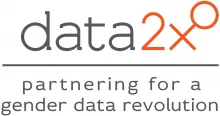Part data celebration and part knowledge sharing, the World Bank held its first-ever Data Day on February 13. Data2X was a part of the action – below are some of our quick takeaways:
It is critical that large, influential institutions, like the World Bank, emphasize the importance of data for achieving their core mandate, and walk that talk.
The World Bank’s Interim President and CEO Kristalina Georgieva, kicked off Data Day by calling for a Data Year – a longer-term emphasis on data for the World Bank. Several senior Bank leaders, Georgieva included, discussed growing the pool of data scientists and statisticians at the Bank – currently at 100. Makhtar Diop, VP of Infrastructure had some important ideas and suggestions – namely that IDA 19 include a percentage for data, and that all Bank projects directly incorporate data costs into their budget. Seeing the World Bank take on all of these suggestions would represent great promise for the data agenda. This sort of emphasis on data and resourcing from influential institutions is key for making much-needed progress in development.
There is no debate: Gender is central to the data conversation.
It will come as no surprise that we were delighted by the many references to gender equality, gender data, and improving the lives of women and girls throughout Data Day. This included Kristalina Georgieva noting the important connection between gender equality and data and calling broadly for more gender data and women in data leadership positions. It also included Caren Grown, Senior Director for Gender at the World Bank (and awesome Data2X Advisory Board member), pointing out that key gender data on domains of women and men’s lives are missing, leaving us without the full picture of their experiences, and Ceyla Pazarbasioglu, VP of Equitable Growth, Finance and Institutions at the World Bank, who talked extensively about the theme of gender; sex-disaggregating data; and systematically incorporating data into World Bank projects while funding national statistical offices and others to strengthen evidence-based decision-making. It was encouraging to see the World Bank and other global experts put gender at the forefront of the data conversation. We will work hard with the World Bank and other partners to maintain this promising trend.
Communicating data is key – and to do that effectively it needs to be ‘fun, human, and accessible’.
As we’ve noted in recent writings, the data conversation is increasingly one of communication – after all, data that is only understandable to those with high-level statistical training misses the point entirely. Telling the story of data—whether with the help of data visualization, innovative data sources and technologies, or human-interest stories—is critical if we want to generate impact. But we need to tell it in a way that makes sense – and makes it usable. Simon Rogers, Google’s Data Editor, provided a fascinating – and entertaining! – case for using innovative data storytelling to capture compelling trends and information that can be used to affect change at the policy level. He urged, “Unless we understand what’s going on in the world, things are not going to get better.” Part of that understanding is using new tools that translate complex data into clear information. But it’s also about using those tools within the larger narrative; it’s about connecting the dots so we’re not just reciting data sets. We applaud our fellow participants for recognizing this link and we look forward to seeing more organizations take up data storytelling that can be translated into evidence-based decision-making.
Data innovation is exciting; partnerships with private sector & governments are key.
I was intrigued by the example a presenter gave of an AI toothbrush; similarly, there were several interesting examples from World Bank staff of geospatial data, real-time sensors, text mining, and other tools being used to improve data availability and program decision-making. While there was also healthy skepticism about buying too much into the hype, the Bank’s active mechanism for Public Private Data Collaboratives is an intriguing step forward. Hopefully there will be ways for outside groups pursuing work on, let’s say utilizing big data for gender analysis, to intersect with this initiative. Lastly, there was some focus on innovative data sources being used in direct complement and partnership with national statistical offices, but a larger focus on that – and practical examples for how to do so, would be an important addition to the next Data Day.
This inaugural Data Day was dynamic and informative. Kudos to our colleagues in the World Bank’s Development Data Group for recognizing this need and convening this important gathering. Let’s hope that they post all of the sessions and slide decks from the lightning talks, which showcased a lot of great work. Data2X looks forward to continuing these conversations at the upcoming UN Statistical Commission and beyond—and committing to the power of gender data to lead to better decisions and improve lives.
